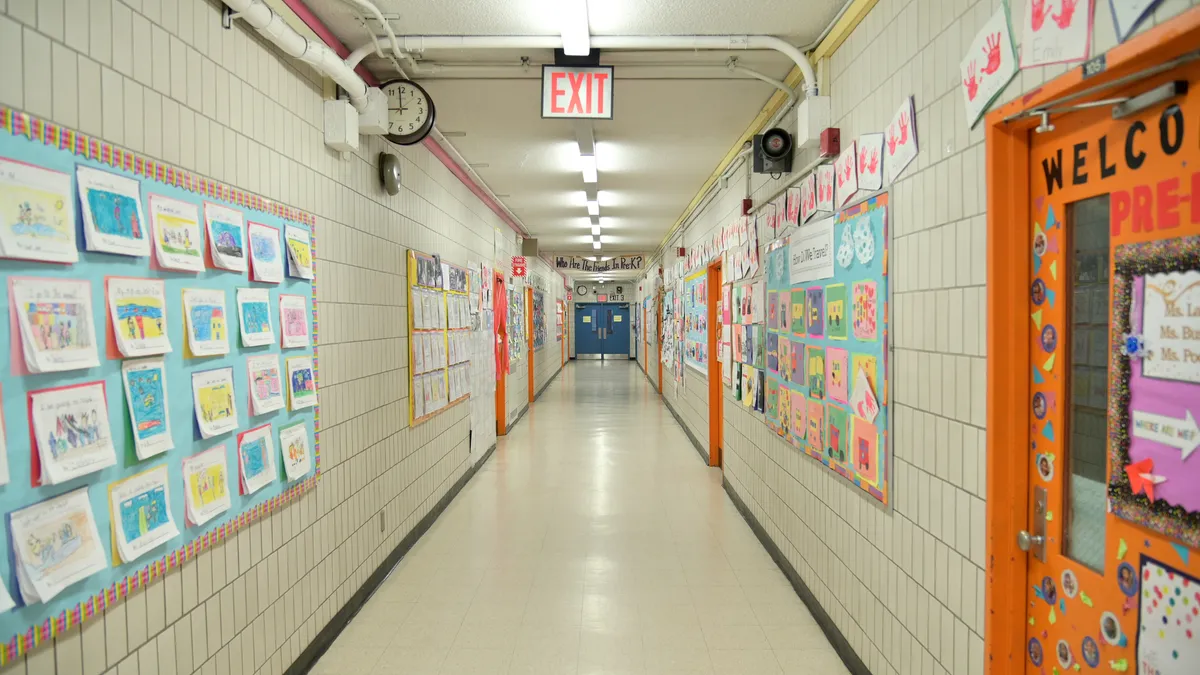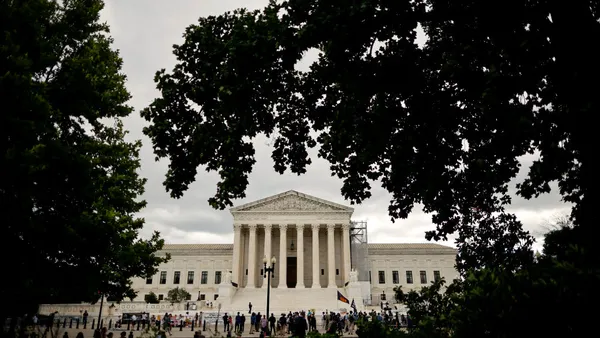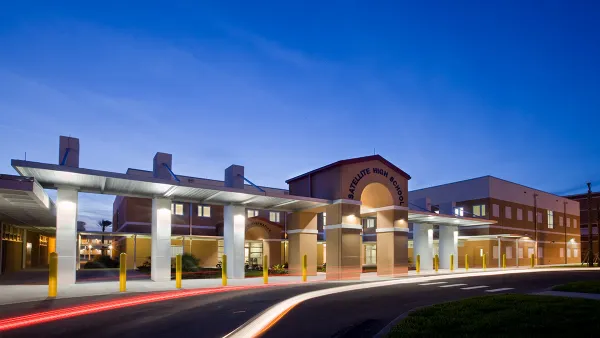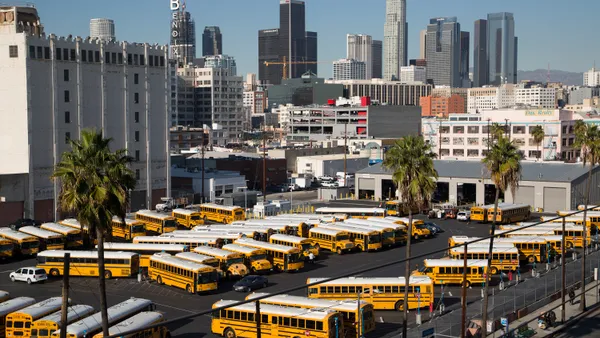Dive Brief:
- Schools were more likely to move activities outdoors or open doors and windows rather than implement higher-cost strategies like replacing or upgrading HVAC systems to mitigate COVID-19 spread, according to a survey of 420 schools released this month by the Centers for Disease Control and Prevention.
- Overall, the CDC study found rural and mid-poverty schools were the least likely to report using multiple higher-cost and resource-intensive plans to address school ventilation problems. The agency said it has found school-based strategies to tackle ventilation help reduce the spread of COVID-19 in classrooms.
- The CDC recommends public health professionals focus attention on supporting the schools least likely to use higher-cost ventilation plans, to ensure a more equitable use of ventilation strategies to prevent transmission of COVID-19.
Dive Insight:
The CDC survey indicates much work remains in addressing school ventilation issues, even after an airborne pandemic brought the matter urgently to light, said Claire Barnett, founder and executive director of Healthy Schools Network, a nonprofit focused on improving children’s environmental health at school.
“There has not been much evidence anywhere that schools are paying a lot of attention to ventilation,” Barnett said. “It’s been a tough issue for them for years.”
The CDC surveyed schools on their use of 11 ventilation improvement strategies. Of those plans, the four most frequently implemented were relocating classes outside when doable (73.6%), monitoring and inspecting current HVAC systems(70.5%), and opening doors (67.3%) and windows (67.2%) when safe.
On the other end, the least-used ventilation approaches schools reported using include implementing portable high-efficiency particulate air (HEPA) filtration systems in classrooms (28.2%) and using those portable filters in high-risk areas (32.8%). In addition, 38.5% of schools told CDC they have replaced or upgraded their HVAC systems since the pandemic began.
Other schools, meanwhile, are in the process of using Elementary and Secondary School Emergency Relief funds to replace or upgrade their ventilation systems, and in fact the Biden administration has encouraged this use for ESSER funds
Barnett said she understands the easiest approach to improve school ventilation is to go outside, but she added that’s not always possible, especially in colder areas.
She applauded the Biden administration’s efforts to bring attention to the problem and help improve school ventilation. The White House in March launched the Clean Air in Buildings Challenge with a four-step fact sheet from the U.S. Environmental Protection Agency.
The administration has also allocated $500 million from the Build Back Better Act, a bipartisan infrastructure law, toward upgrading public school facilities to be more cost- and energy-efficient.
Barnett, however, said she’s not impressed by the Build Back Better funds allocated for this purpose because they don't commit schools to focus directly on indoor air improvements or assessments.
Schools are more densely occupied than even assisted living facilities, and 40% of children have preexisting health conditions, Barnett said.
On top of that, many school buildings have aging infrastructures. The American Society of Civil Engineers reported in 2021 that 53% of districts need to update or replace multiple parts of their buildings, including HVAC systems. More specifically, about 41% of schools said they faced issues with their HVAC systems, the group found.
Ventilation is “an issue that schools need a lot of help with,” Barnett said. That’s why Healthy Schools Network is advocating for Congress to help EPA launch a national educational initiative on indoor air quality for $110 million per year, she said.
“We’ve been saying that from day one — that it’s the poorest schools in the poorest communities with the poorest kids, hardest hit by both climate and COVID, that need the most work and need the most help,” she added.













